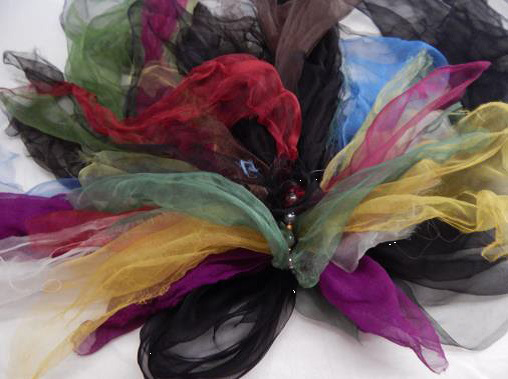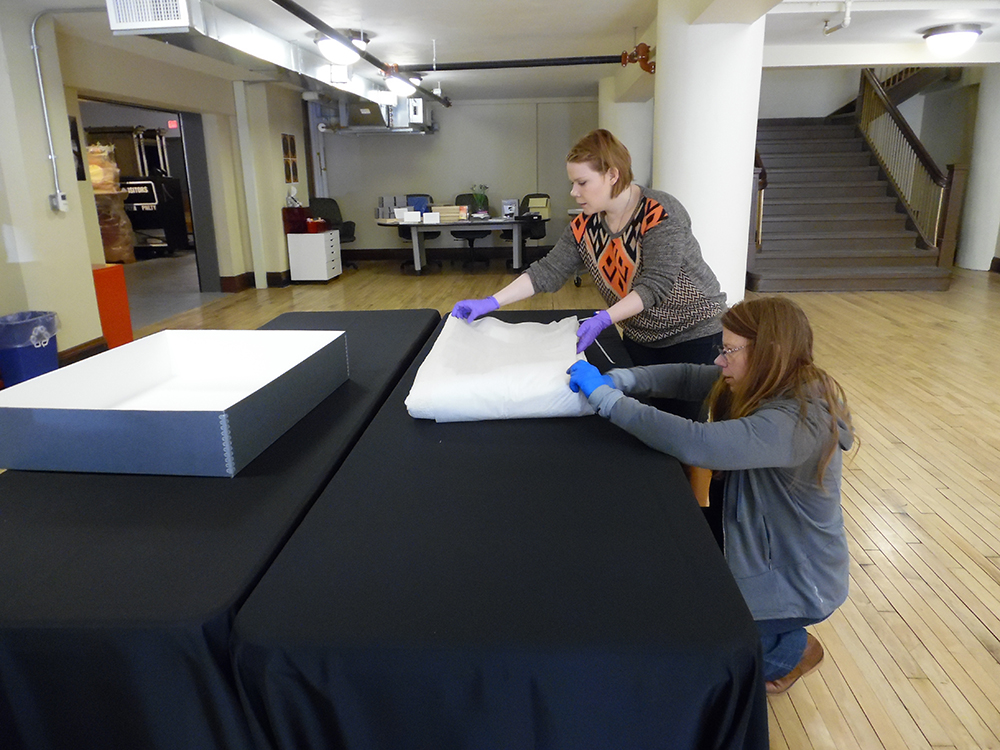Experts at the History Center’s Museum Conservation Center are often asked questions about caring for textiles, including quilts, wedding gowns, military uniforms, or other items. Some of these items have historical importance or are valued by the owner for sentimental reasons. While we recommend that visitors make an appointment with the Conservation Center for a more thorough assessment of the condition or storage of your textile, below are a few tips regarding the care of textile collections:
1. “Do no harm” is our credo. We don’t have a magic solution to clean away a century of history, nor do we recommend that you try your own stain removal experiments. Over-the-counter cleaning products or detergents may cause harm to delicate fabrics. Restraint is often the best practice.
2. Textile conservation is both a science and an art. There are specific ways in which a qualified textile conservator will approach the mending of an item that will leave original material intact yet stabilize it as much as possible. For instance, silk crepe may be dyed to match the underlying fabric and used to encapsulate shattered silk areas on a quilt top. This sheer overlay makes a “sandwich” of fabric layers. The original material may still be viewed through the application of the transparent crepe fabric. The small fabric remnants will not be detached from the quilt, as it might occur over time if they were not encapsulated. The aesthetics, in terms of the overall appearance of the quilt, and a technical solution to hold the fabric in place are merged.

3. If your textile is a candidate for specialized conservation treatment, give us a call before you transport the item. Brittle fabrics are vulnerable to damage, and we can let you know how to best prepare them for the trip. Silk typically shatters to pieces once dry rot sets in and weakens the fibers, so adding a support to keep the fabric from sagging is essential.
4. Textiles need to breathe, so please don’t store them inside plastic bags. We recommend using unbuffered acid-free tissue paper as a material for wrapping cloth items. Carefully handle with white gloves to keep oils from your hands from transferring into the cloth. Gently fold (adding tissue to pad out the folds and form) and place the item within an acid-free, lignin-free storage box. Another storage option for a large item, such as a quilt, is to wrap and roll it within a clean white sheet that has been washed thoroughly. We have a variety of archival storage boxes available for purchase and can help you make your selection.
5. Have you done your homework? Researching items can lead to interesting discoveries about customs, materials, and culture. Take a Hmong tiger story cloth, for example. The tradition of needlework was strong in this tribal community and continued through their transition away from Laos and toward resettlement in America. The changes to the culture were translated through stitches that record stories and begin to blend them with new iconography (like soldiers with guns and escape via life preserver across the Mekong River).
We enjoy empowering collectors and family caretakers with knowledge about materials and methods that may help them make better decisions. Whether you have inherited fabric items that now need a little TLC or are collecting vintage clothing, we encourage you to sign up for our Textile Care Clinic on Saturday, Nov. 14, 2015 to learn more and ask questions of our textile conservator.
Barbara Conner is the conservation services manager at the Senator John Heinz History Center’s Museum Conservation Center.







